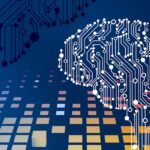Artificial Intelligence (AI) has emerged as a transformative force in various sectors, fundamentally altering how businesses operate and how work is performed. Defined as the simulation of human intelligence processes by machines, particularly computer systems, AI encompasses a range of technologies, including machine learning, natural language processing, and robotics. Workforce automation, on the other hand, refers to the use of technology to perform tasks that were previously carried out by human workers.
The convergence of these two domains has sparked significant interest and debate regarding their implications for the future of work. As organizations increasingly adopt AI-driven solutions, the landscape of employment is undergoing a profound shift. The integration of AI into business processes promises enhanced efficiency, reduced operational costs, and improved decision-making capabilities.
However, this technological advancement also raises critical questions about job security, workforce dynamics, and the ethical considerations surrounding automation. Understanding the nuances of AI and workforce automation is essential for navigating the complexities of this evolving environment.
The Impact of AI on Job Displacement and Creation
The advent of AI and automation technologies has led to widespread concerns about job displacement. Many fear that machines will replace human workers in various roles, particularly in industries characterized by repetitive tasks or predictable patterns. For instance, manufacturing jobs have already seen significant reductions due to the implementation of robotic systems capable of performing assembly line tasks with greater precision and speed than human workers.
According to a report by McKinsey Global Institute, it is estimated that up to 800 million jobs could be displaced globally by 2030 due to automation. However, while certain jobs may be at risk, AI also has the potential to create new employment opportunities. The emergence of AI technologies necessitates a workforce skilled in managing, programming, and maintaining these systems.
For example, roles such as data scientists, AI ethicists, and machine learning engineers are becoming increasingly vital as organizations seek to leverage AI for competitive advantage. Moreover, industries such as healthcare are witnessing the creation of new positions focused on interpreting AI-generated insights to enhance patient care. Thus, while job displacement is a genuine concern, it is essential to recognize that AI can also serve as a catalyst for job creation in emerging fields.
The Role of AI in Streamlining Business Operations
AI plays a pivotal role in streamlining business operations across various sectors by automating routine tasks and enhancing decision-making processes. In customer service, for instance, chatbots powered by natural language processing can handle inquiries and provide support around the clock, significantly reducing response times and freeing human agents to focus on more complex issues. This not only improves customer satisfaction but also optimizes resource allocation within organizations.
In addition to customer service, AI-driven analytics tools enable businesses to process vast amounts of data quickly and accurately. By leveraging machine learning algorithms, companies can identify trends and patterns that inform strategic decisions. For example, retailers can analyze consumer behavior data to optimize inventory management and personalize marketing efforts.
This data-driven approach enhances operational efficiency and allows businesses to respond more effectively to market demands.
Ethical and Social Implications of Workforce Automation
The rise of AI and workforce automation brings forth a myriad of ethical and social implications that warrant careful consideration. One significant concern is the potential for bias in AI algorithms, which can perpetuate existing inequalities in hiring practices or decision-making processes. For instance, if an AI system is trained on historical data that reflects biased hiring practices, it may inadvertently favor certain demographics over others, leading to discrimination in recruitment.
Moreover, the social implications of workforce automation extend beyond individual job displacement; they encompass broader societal issues such as income inequality and access to opportunities. As high-skilled jobs proliferate in the AI era, there is a risk that those without the necessary skills or education may be left behind. This disparity could exacerbate existing socioeconomic divides and create a polarized labor market where only a select few benefit from technological advancements.
The Future of Work: Adapting to AI and Automation
As AI continues to evolve, the future of work will inevitably be shaped by its integration into various industries. Organizations must adapt to this new reality by rethinking their workforce strategies and embracing a culture of continuous learning. This involves not only investing in technology but also fostering an environment where employees are encouraged to develop new skills that align with the demands of an automated workplace.
Furthermore, the future of work will likely see a shift towards more collaborative models where humans and machines work side by side. This hybrid approach can enhance productivity while allowing employees to focus on tasks that require creativity, critical thinking, and emotional intelligence—qualities that machines currently lack. As such, organizations must prioritize training programs that equip workers with the skills needed to thrive in this collaborative landscape.
Upskilling and Reskilling the Workforce for the AI Era
To navigate the challenges posed by AI and automation, upskilling and reskilling initiatives are essential for preparing the workforce for the demands of the future. Upskilling refers to enhancing existing skills to keep pace with technological advancements, while reskilling involves training individuals for entirely new roles that may emerge as a result of automation.
For instance, companies can partner with educational institutions to develop tailored training programs that address specific skill gaps within their workforce. Additionally, online learning platforms offer flexible options for employees seeking to acquire new competencies at their own pace. By investing in employee development, organizations not only enhance their talent pool but also foster loyalty and engagement among their workforce.
The Role of AI in Enhancing Workplace Safety and Efficiency
AI technologies are increasingly being leveraged to enhance workplace safety and efficiency across various industries. In manufacturing environments, for example, AI-powered sensors can monitor equipment performance in real-time, predicting potential failures before they occur. This predictive maintenance approach minimizes downtime and reduces the risk of accidents caused by equipment malfunctions.
For instance, logistics companies utilize AI algorithms to analyze traffic patterns and weather conditions, enabling them to determine the most efficient delivery routes. This not only reduces fuel consumption but also enhances overall supply chain efficiency.
By harnessing AI’s capabilities, organizations can create safer work environments while simultaneously driving productivity gains.
Challenges and Opportunities in Integrating AI into the Workforce
Integrating AI into the workforce presents both challenges and opportunities that organizations must navigate carefully. One significant challenge is the resistance to change among employees who may fear job loss or feel overwhelmed by new technologies. To address this concern, organizations must prioritize transparent communication about the benefits of AI integration and involve employees in the decision-making process.
On the other hand, the integration of AI also presents opportunities for innovation and growth. Companies that successfully adopt AI technologies can gain a competitive edge by improving operational efficiency and enhancing customer experiences. For instance, businesses that leverage AI-driven insights can make data-informed decisions that drive revenue growth and market expansion.
By embracing these opportunities while addressing challenges head-on, organizations can position themselves for success in an increasingly automated world.
The Importance of Human-AI Collaboration in the Workplace
As AI technologies become more prevalent in the workplace, fostering collaboration between humans and machines will be crucial for maximizing productivity and innovation. Human-AI collaboration allows organizations to leverage the strengths of both parties—machines excel at processing vast amounts of data quickly while humans bring creativity, empathy, and critical thinking skills to the table. For example, in healthcare settings, AI can assist doctors by analyzing medical images or predicting patient outcomes based on historical data.
However, it is ultimately the human clinician who interprets these insights within the context of individual patient care. This collaborative approach not only enhances decision-making but also ensures that human judgment remains central to critical processes.
The Economic and Financial Implications of Workforce Automation
The economic landscape is being reshaped by workforce automation driven by AI technologies. On one hand, businesses stand to benefit from increased productivity and reduced labor costs as automation streamlines operations. This can lead to higher profit margins and potentially lower prices for consumers.
For instance, companies that automate routine tasks can allocate resources more effectively toward innovation and growth initiatives. Conversely, widespread job displacement due to automation could have significant economic repercussions if not managed properly. A decline in employment levels may lead to reduced consumer spending power, ultimately impacting overall economic growth.
Policymakers must consider strategies such as universal basic income or targeted support programs for displaced workers to mitigate these effects and ensure a balanced transition into an automated economy.
Navigating the Future of Work in the Age of AI
The integration of artificial intelligence into workforce automation presents both challenges and opportunities that will shape the future of work in profound ways. As organizations adapt to this new landscape, it is essential to prioritize ethical considerations while fostering a culture of continuous learning among employees. By embracing human-AI collaboration and investing in upskilling initiatives, businesses can navigate this transition effectively while maximizing productivity and innovation.
As we move forward into an era defined by technological advancement, it is crucial for stakeholders—including businesses, employees, educators, and policymakers—to work together in addressing the complexities associated with workforce automation. By doing so, we can create a future where technology enhances human potential rather than diminishes it—a future where both people and machines thrive together in harmony.









